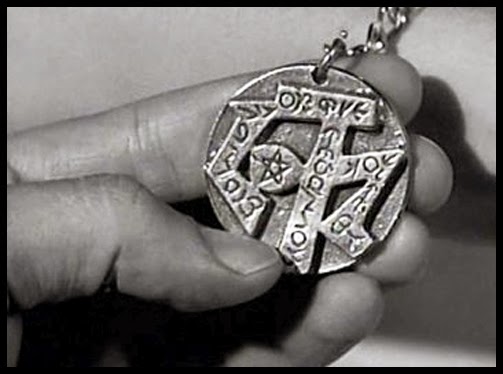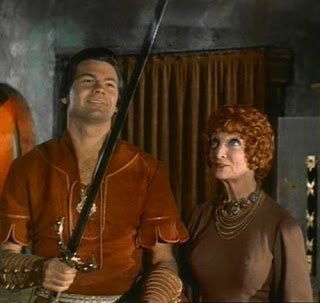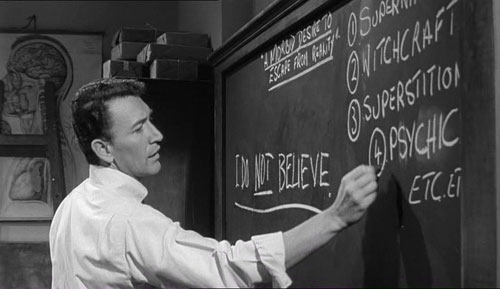
by Rosemary Benton
[Time is running out to get your Worldcon membership! Register here to be able to vote for the Hugos.]
Merry Christmas, everyone!

With the United States still reeling from recent events, I feel that now more than even would be the appropriate time to reflect on the past months and be grateful for the artistic talents and accomplishments that have helped bring us joy even in dark times. To that end I would like to say thank you to authors Andre Norton, J. G. Ballard and Daniel F. Galouye for their respective works of high fantasy, speculative fiction and intense science fiction/horror over the year. In film, actors Vincent Price and Julie Harris, as well as director Ishirō Honda, brought audiences horror tales both comical and macabre.
In the spirit of appreciation for the hard working men and women who bring the world its entertainment there is also one film which has been sadly overlooked this past June which I will now heap well deserved praise upon. I am speaking, of course, of Jason and the Argonauts.

Directed by Walt Disney Productions veteran Don Chaffey, and starring the wonderful acting talent of Honor Blackman and Nancy Kovack, Jason and the Argonauts is a fairly faithful adaptation of the Greek hero Jason's quest to acquire the mythical Golden Fleece and rightfully ascend to the throne of Thessaly. Through the artistic majesty of stop-motion animation and the craftiness of experienced low-budget filmmaking, Jason's eye-popping adventures through the ancient Greek world of monsters, prophecy, magic and gods come to life like they never have before.
On the eve of the sacking of Thessaly, the antagonist Pelias (played by Douglas Wilmer) asks a prophet if Zeus has willed his victory against King Aristo. The prophet confirms that he will indeed be victorious, but as Pelias is about to lay down his sword to show faith in the prediction and his dedication to Zeus, the prophet informs him that King Aristo is not without heirs to the throne. Pelias snatches back his sword and declares that he will kill all of the royal family. In doing so not only does he falter in his faith to the gods, but goes too far when he hunts down and murders Aristo's daughter Briseis as she is praying for protection from the goddess, Hera (played by Honor Blackman). Due to his overzealousness, Pelias is told by Hera, disguised as the temple's priestess, that the infant Jason has been taken into hiding and will one day return to kill him.
The scene then cuts to Olympus where Zeus (played by Niial MacGinnis) is watching the battle through a fountain. Hera returns to bargain with Zeus for her right to seek restitutions against Pelias for the defamation of her temple. Zeus acquiesces, but only permits Hera to directly aid Jason five times for the five times that Briseis called out to Hera by name. Thus the stage is set for the inevitable reunion 20 years later between King Pelias of Thessaly and the vengeful, adult Jason (played by Todd Armstrong).

Through perseverance in daring battles against a giant living statue, harpies, a hydra and undead soldiers, along with luck granted by his heavenly protector, Jason and his crew aboard the ship Argo ultimately claim ownership of a legendary and powerful artifact: the Golden Fleece. With this in hand, he intends to return home and show that it is his divine right to rule Thessaly.
That, however, is a story for another time. The movie ends before Jason is able to retake the kingship from Pelias. After defeating seven skeleton warriors sown by King Aeëtes of Colchis (played by Jack Gwillim) using the teeth of the defeated hydra, the remaining Argonauts and the sorceress Medea set out to sea once more. The film concludes with Zeus and Hera determining that their meddling in the mortal lives of their champions is not yet over and that they may yet have further plans for Jason.

Despite an ending that just begs for a sequel in order to finish off Jason's initial quest to kill Pelias, the film as a whole is very, very well executed. Jason and the Argonauts is a masterpiece in special effects, atmospheric musical scoring, and well paced storytelling (in spite of the choice to not conclude the film back in Thessaly). A review from Variety magazine rightfully expresses awe at the resourcefulness of Don Chaffey, making note of the fact that not only did the film showcase the pinnacle of stop-motion animator Ray Harryhausen's craft, but managed to stretch its meager 3 million dollar budget to include a life size replica of the Argo!

Not only is Jason and the Argonauts a prized piece of art from Morningside Productions and Columbia Pictures, but it also stands as a proud member of a newly emerging genre within science-fiction and fantasy stories. More accurately, it is a tour de force within the hotly debated and evolving subgenre of "sword and sorcery" (as defined within the magazine Amra by Fritz Leiber and Michael Moorcock). What seems to be paramount to this subgenre includes the following:
World building elements of medieval and/or ancient technology enhanced with paranormal and borderline science-fiction elements.
Jason and the Argonauts has those aplenty from talking statues, gods who can teleport or grow at will, and golden ram's wool that can revive the dead. The power behind such miracles is only loosely defined as "the will of the gods", but there is a quasi-scientific ritual or pattern that brings these miracles to pass. IE to speak with Hera and receive her advice Jason must talk to the figurehead of the Argo, or to revive someone with the Golden Fleece the pelt must first be placed on the subject and then prayed over.

and,
Developed substantial characters whose vendettas move the plot forward one personal battle at a time.
Consider the plight of Jason, rightful heir to the throne of Thessaly, and even the minor character King Phineus who was once blessed by the gods but is now cursed due to hubris. Rather than focusing on merely the politics of governance and other widespread or far reaching changes to the world, the story of Jason and the Argonauts is wrapped up entirely in the mission of only a few people. It is epic, but surprisingly small and human in a way. The entire human race isn't learning the same lessons as Jason by partaking in the quest for the Fleece with him, but we do learn as an audience when listen to the retelling of his story.

When held up against other "sword and sorcery" titled such as Robert E. Howard's Conan the Barbarian series, C. L. Moore's Black God's Kiss and to an extent Andre Norton's Witch World, Jason and the Argonauts seems right at home. It will be interesting to see how the addition of this highly entertaining and memorable movie evolves the genre to which it belongs. In terms of the creative team behind the film, I find it hard to think of how the special effects techniques will continue to improve after reaching such perfection, but I have faith in Ray Harryhausen and hope that he can continue to find funding and future feature length partnerships in the film industry.


![[December 25, 1963] Animating an Epic (Don Chaffey's <i>Jason and the Argonauts</i>)](https://i0.wp.com/galacticjourney.org/wordpress/wp-content/uploads/2018/12/631225argonautsposter.jpg?resize=425%2C352)
![[Oct. 30, 1963] <i>Jim Knopf and Lukas the Train Engine Driver</i> by Michael Ende: A Classic in the Making](https://i0.wp.com/galacticjourney.org/wordpress/wp-content/uploads/2018/10/631030Cover_Jim_Knopf_English.jpg?resize=300%2C372)















![[October 22, 1963] A Whole New Fantasy (Andre Norton's <i>Witch World</i>)](https://i0.wp.com/galacticjourney.org/wordpress/wp-content/uploads/2018/10/631022cover.jpg?resize=400%2C372)










































